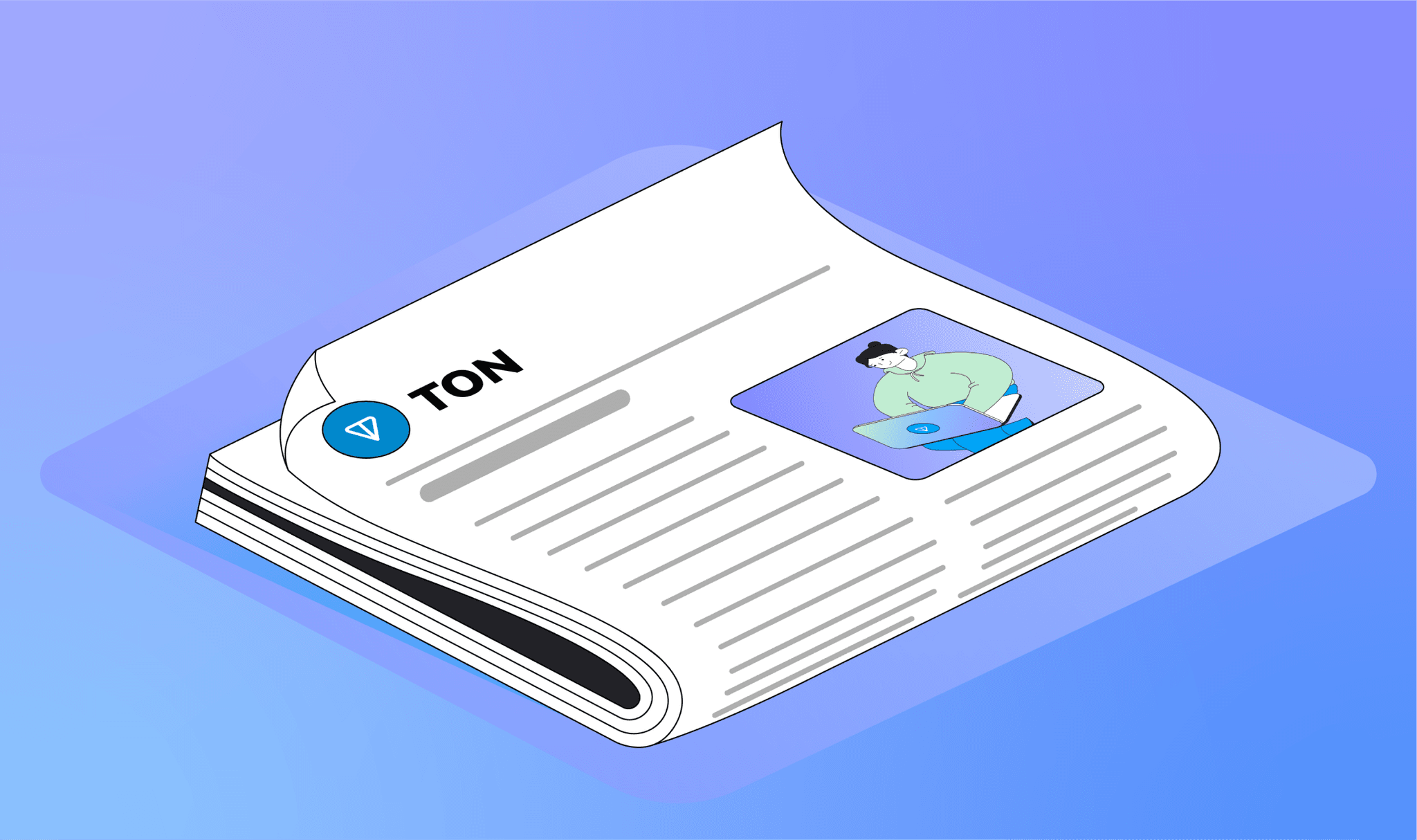TON Partners Report, December 2023
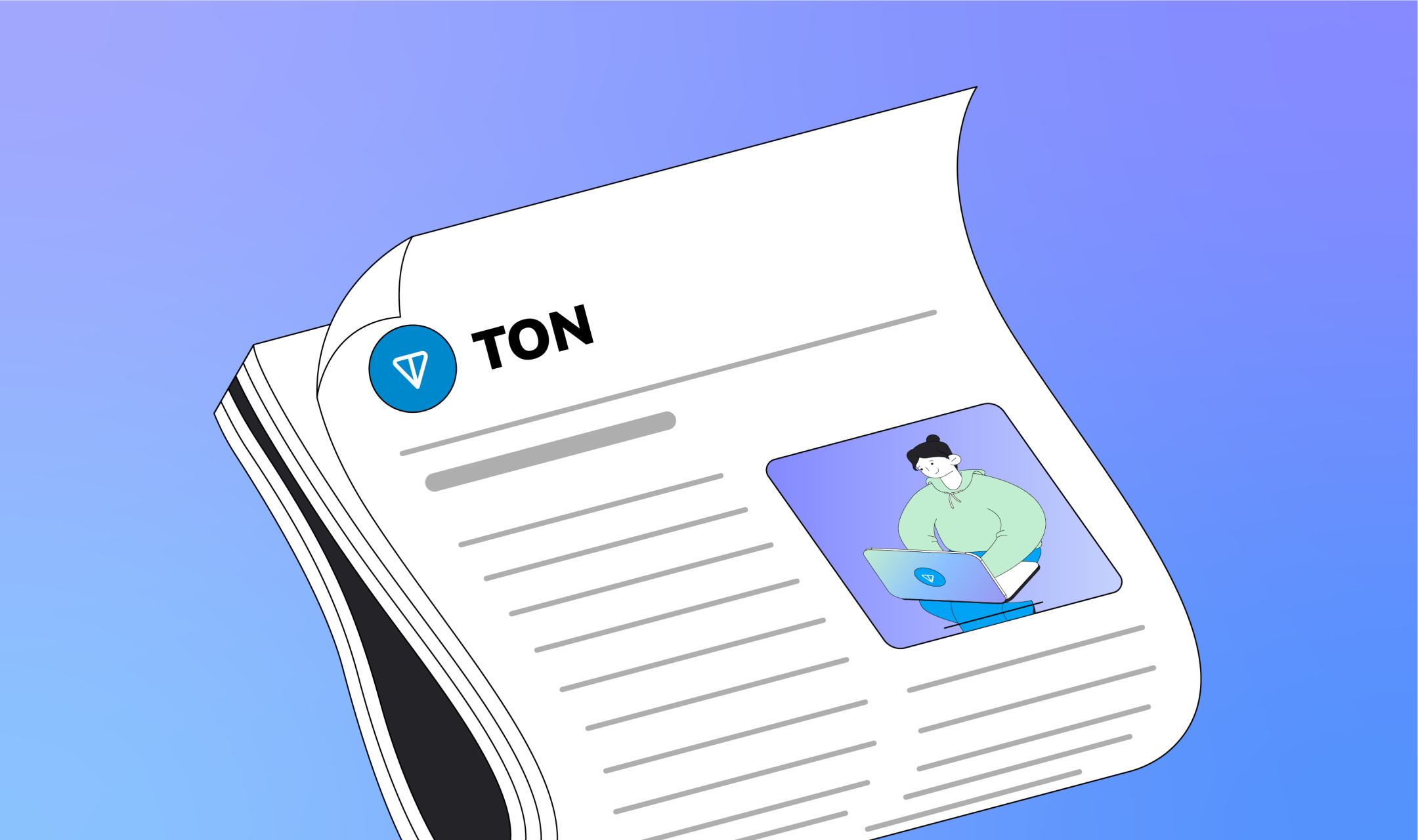
As we close another year, the TON Ecosystem has witnessed remarkable milestones that underscore the platform's evolution and position at the forefront of Web3 innovation.
December 2023 brought exciting developments, from strategic partnerships and financial grants to fostering TON-based applications to technological advancements and community-driven initiatives that have significantly enhanced our network's functionality and user engagement.
This update highlights all the achievements and commitment of the TON community, developers, and partners in pushing the boundaries of what's possible within the blockchain space, setting the stage for an even more promising future.
Key Highlights
- Kucoin Ventures will provide a grant to enhance the growth of the TON Ecosystem, specifically supporting five TON-based mini-apps focusing on real-world blockchain solutions in payments or GameFi
- TON20 Inscriptions spiked the network (80 million inscription transactions over 15 days), providing a valuable battle test for mass adoption
- Ledger integrated support for TON enabling cold storage of assets on hardware wallets
- TONomania, OKX trading campaign, results in TON being in the TOP 10 spot trading list for retail traders
- Animoca Brands published research about TON mass adoption and scalable infrastructure
- TON Society introduced profiles and badges for participants, furthering community outreach
- Foresight X and TonUp launched a $200K grants program for the TON Ecosystem
In the following sections, we will focus on updates from individual sections or projects of the TON Ecosystem.
Telegram Wallet Updates
- Telegram Wallet opt-out rollout has expanded to Ethiopia and is slated for a major push in January 2024 across SEA and Latin America
- Monthly Active Users of Telegram Wallet now exceeds 800K and is forecasted for major growth in 2024 with further expansion efforts
The Gateway conference
- The Gateway Dubai conference hosted 536 attendees and 34 speakers from TON Foundation, TOP, ecosystem partners, government, and community builders
- Special thanks to our sponsors: Orbs, Vy Capital, ByBit, Kucoin, MEXC, Alibaba Cloud (and partners), TonUp
- See The Gateway Rewind for the most important announcements and updates
TON In the Wild
- TON x Telegram: 2023 Wrap-Up Meetup (Prague, Seoul)
- TON India Meetup
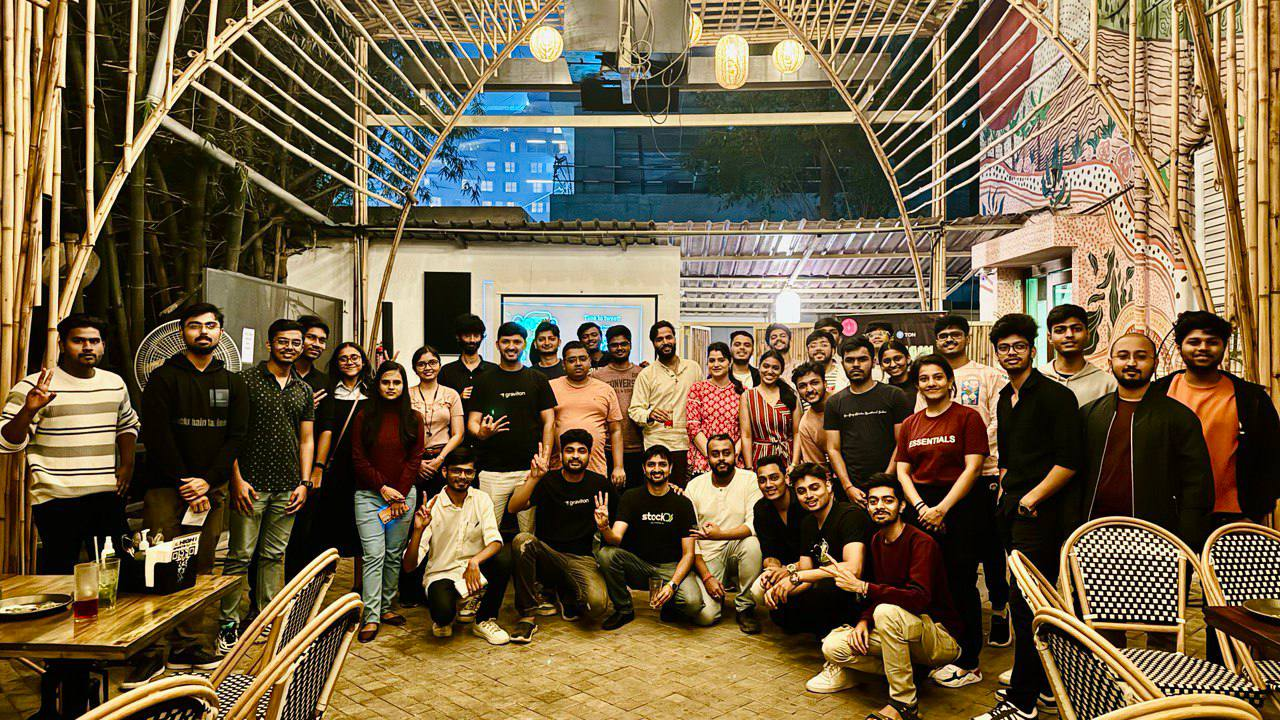
- TON Korea Dev Workshop
- TON Meetup for Developers & Founders (CIS)
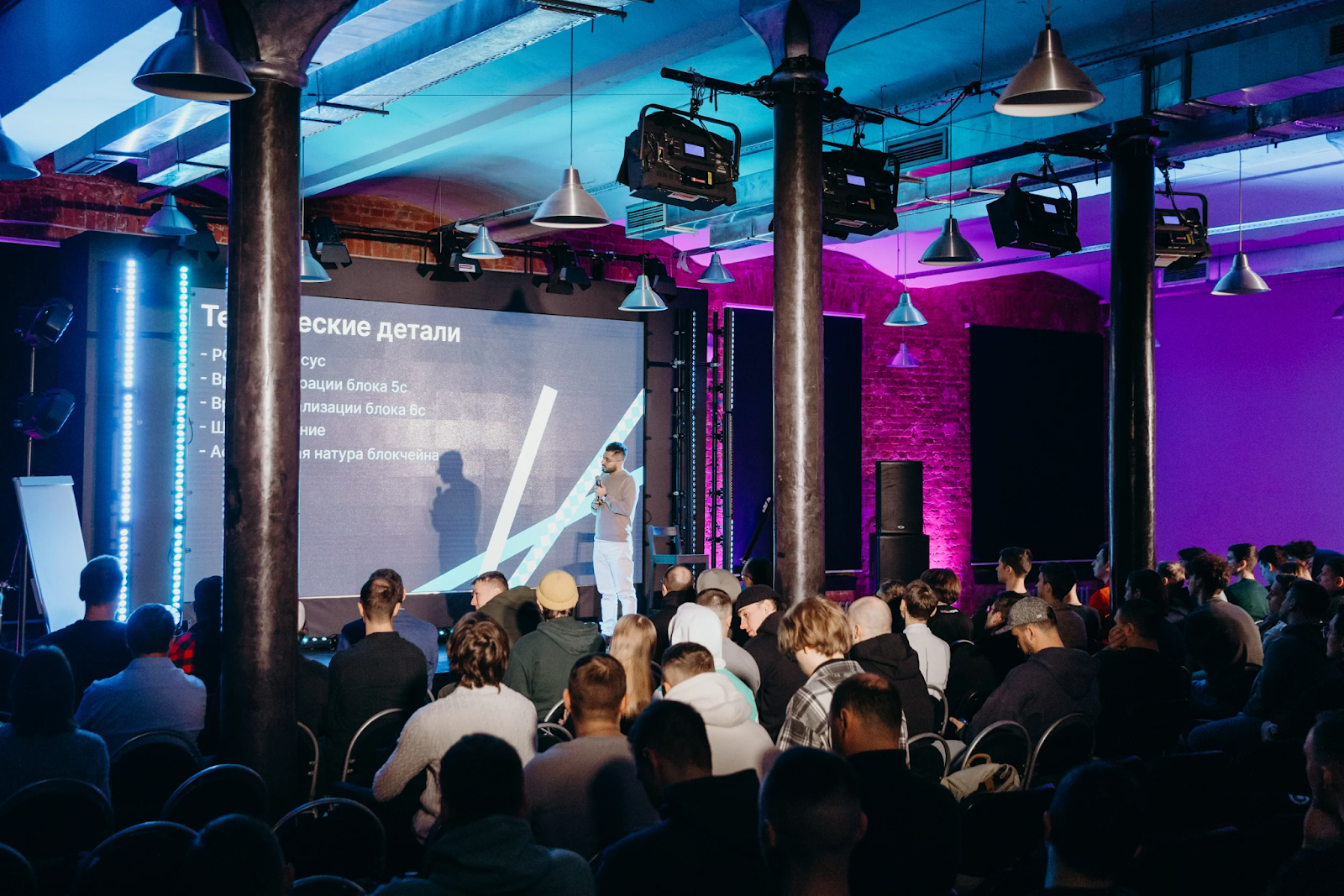
For our upcoming events, please see the new TON Society calendar.
Developer Updates
- The long-awaited TVM Upgrade has launched on the mainnet. This update makes TVM one of the most versatile virtual machines around, including the ability to create Zero-Knowledge protocols.
- TON has processed over 80 million inscription transactions in just 15 days. The network infrastructure has been improved for further scalability
- New node requirements for full nodes, validators, and archive nodes were released
- Tact language 1.1.5 release is out with migration to the next-generation @ton libraries
- Blueprint, TON’s all-in-one tool for smart contact development, rolled out a new version 0.15.0. The update includes the introduction of a ‘verify’ command, streamlining contract verification on verifier.ton.org. Custom API v2 endpoints have also been incorporated, catering to testing needs within private TON APIs and enhancing developers' flexibility.
- Sandbox, TON’s testing framework for smart contracts, also rolled out a new version 0.15.0 with new TVM opcode support
- A collaborative effort between Tontech, Telegram, Wallet, Tonkeeper, Getgems, TON Diamonds, and other teams resulted in substantial improvements to the TON Connect SDK. This effort culminated in the release of new versions, @tonconnect/sdk 3.0.0 and @tonconnect/ui 2.0.0, which included more than 50 enhancements and bug fixes.
- For tApps Center listings, please reach out to Gleb Vorontsov
For the full Q4 Developer Update, please see this blog post.
Inscriptions Attributes of the POS Chains
1. Spillover Effect: There are inherent holding costs on the BTC chain, such as miner fees, and the high congestion of the BTC chain leads to very high initial holding costs for inscriptions, which, in turn, triggers the spillover effects on other public (POS) chains.
2. Lottery Attributes: Participating in inscriptions is similar to buying a lottery ticket. Therefore, a large number of targets can emerge on the inscription protocol every day. Average retail users do not invest large amounts of money; rather, the collective small investments make up the pool. Objectively, this increases the stickiness of funds.
3. New Issuance Mechanisms: The start of new cycles and bull markets is aided by new issuance mechanisms, trading mechanisms, and market-making mechanisms that attract fresh capital injection. Regardless of the technology behind the protocol (like inscriptions or friend.tech), the essence of highly traded assets is mainly related to cheap distribution, holding, transaction, and market-making costs.
4. Fair Launch Maximizes Memes: Every asset has meme attributes. If a meme is the sum of a project's technology, narrative, price, team, cultural background, and events, then the secondary market's most agreeable aspect must be that of a fair launch. From the POW era to ICO, and DeFi, the pursuit of retail investors for equal participation opportunities in coin issuance systems (at least theoretically fair) has remained steadfast. Compared to protocols such as friend.tech, inscriptions have taken this to the extreme and have achieved a fixed level from the default distribution rules (no smart contracts mean no malfeasance).
5. Low Liquidity Market: Compared to BTC inscriptions, although the inscriptions of POS chains have many participants, the market value and liquidity are lower. The market must have a market maker to quickly go from zero to one, and one of the first tasks is to minimize the market-making cost. Here, the low-efficiency OTC trading market of inscriptions is actually an advantage – market makers do not need to lock in liquidity costs in advance for mm coins. The absence of smart contracts means that the market pricing logic is actually centralized, and it does not require a sweep of the floor like NFTs.
Inscription Features of TON
Several inscription projects on TON have their own advantages and features, but if attributed to the features of the TON public chain itself, the following exists:
-
With the help of the Telegram frontend, Telegram supports an environment where retail investors can easily enter and conduct smooth transactions. The final casting volume of NEAT, promoted by the NEAR Founder Illia Polosukhin, stood at around 24,600. Compare this to Tonano, a pure community project without any official foundation support, which had a final casting volume of 30,000+. Using the Telegram wallet and TON Space (self-custodial wallet inside @wallet), one can operate smoothly directly on a mobile-first basis. Inscription projects on TON have naturally embraced building Telegram mini-apps for a smoother UI/UX. Since Telegram accounts have natural anti-witch attack properties, this is a barrier against cheating, like the gas mechanism, and it also serves as the basis for larger-scale wealth creation.
-
The flexibility of TON smart contracts allows users to pay gas fees like Ethereum or add protocol fees directly in the contract, like Gram20, or even help users directly pay gas fees to achieve free minting. In the future, there can be project implementations of airdrop-type inscriptions, where meeting certain conditions results in inscriptions and the receipt of jettons.
-
Like the BTC inscription protocol, many inscription protocols have also emerged on TON, including Tonano, Gram-20, Tonot, etc. These protocols focus on trading, TG mini-apps, and social attributes. On BTC, trading, lending, NFTs, and stablecoin projects based on inscriptions are gradually emerging, while the current inscription ecosystem of TON is mainly based on basic inscription protocols capitalizing on social mechanics.
TON Inscription Projects Analysis
Tonano
- Web:https://tonano.io/
- Twitter:https://twitter.com/Ton_scription
- Telegram: https://t.me/tonanoOfficial
- Announcement:https://t.me/Tonano_announcement
- Telegram Mini App: https://t.me/TonanoBot
- On-chain data: https://t.me/dtonforum
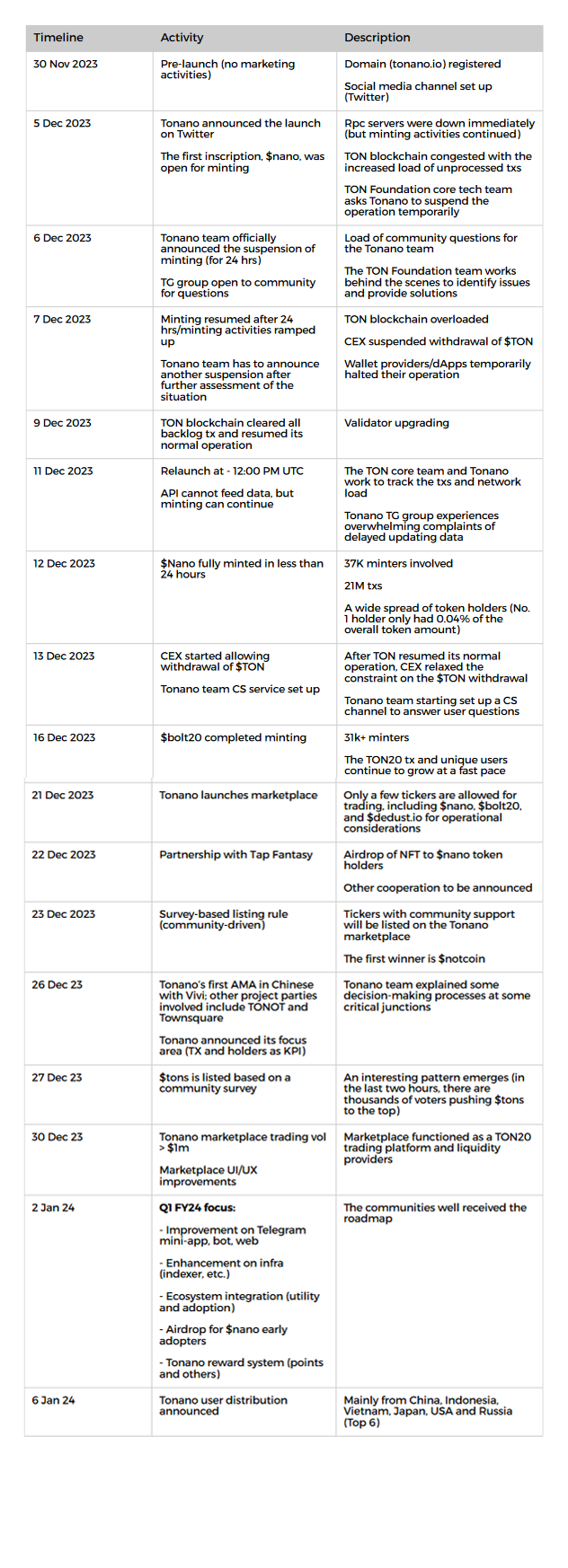
Gram-20
- Web: https://gram20.com/
- Bot: https://t.me/gram20bot/app
- OTC Bot: https://t.me/UmbrellaEx_Bot
- Twitter: https://twitter.com/gramforton
- Telegram group: https://t.me/Gram_association
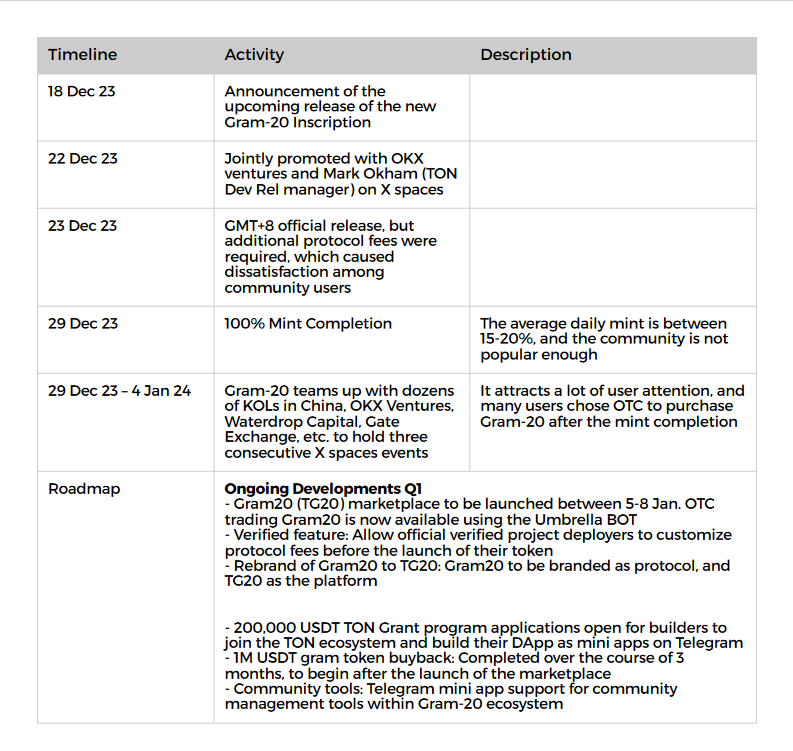
Team: The team is professional and supported by various resources. This support includes joint meetings and promotional activities with exchanges, VCs, and KOLs to promote the market. As a latecomer, it has garnered significant market attention. In terms of business cooperation, it promotes exchange listing, launches developer grants to foster ecological development, and collaborates with Umbrella to develop the OTC market. Simultaneously, the product and official website feature beautifully designed UIs.
Product: Using the TG mini app as a foothold, it has somewhat avoided direct competition with TON-20 in the early stages. It is also a very user-friendly product implementation method that aligns with TG's mini-program planning. Restricting the interval of mint commands and imposing penalties is a good way to increase platform user participation, avoiding plundering and preemption by scientific groups (such as in the early stages of nano); Treasury's asset reserves. Moreover, it innovatively uses the TON smart contract's user charging mode, realizing a POS chain ICO in the innovative sense, i.e., Inscriptions Coin Offering. Unlike ICO, IDO, and other token sale models, the final Gram-20 token sale model and inscription engraving are not absolutely related. The project party can control the quantity and ratio of tokens.
Drawbacks: The market often pays attention to the first project in the public chain. Gram-20 is half a month late, losing the first-mover advantage and user mindshare; the fee design of the inscription product design has backfired. It's not that the mechanism is bad, but it does not conform to the freemint emphasized in the current inscription market. The boycott caused by the fee in INJS (before gram-20) has had a very bad impact on the market. The project party lacks real-time attention to the market. In fact, there was plenty of time to adjust before; this also extends to the market's reputation of the project and the lack of a good community reputation.
Vision: The project's listing on CEX will greatly help its popularity and market liquidity; a 1M USDT gram buyback to boost the market can make up for the problems caused by the previous fee design. Plus, the combination of Grants has the potential to form a hotspot on TON in the short term; in the medium term, the gram-20 team may have more resource support and is more likely to innovatively use the mini-program ecosystem or on-chain ecosystem empowerment as the key to development.
The total issuance of GRAM is 210 billion, with a minting cost of approximately 2.1 million US dollars. The initial price is 0.00001 USDT, and it was officially Minted on December 29, 2023. GRAM Mint charged a Protocol Fee of 0.04 TON per piece, which will be used to meet future economic incentives and maintain the sustainability of the GRAM project.
The GRAM Protocol Fee incentive plan is as follows:
- 50% - Buyback GRAM tokens
- 10% - Infrastructure construction
- 10% - Ecological incubation investment
- 10% - Liquidity management
- 10% - Team building
- 10% - Market promotion
Tonot
- Twitter: https://twitter.com/Tonot_io
- Telegram Channel: https://t.me/Tonot_io
- Telegram Announcement channel: https://t.me/Tonot_ann
- Telegram Bot: https://t.me/tonottg_bot
- Website: https://tonot.io/
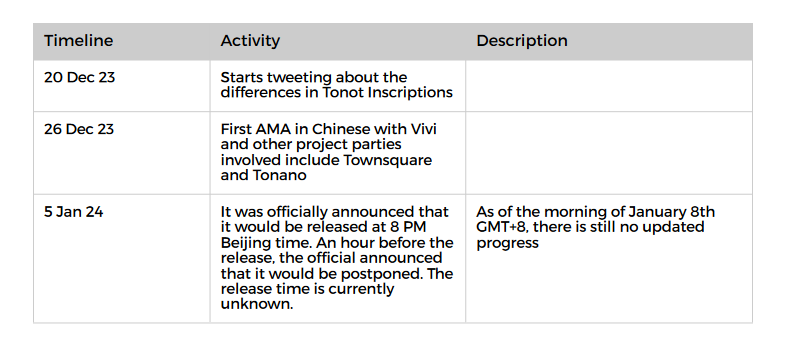
As the product has not officially launched yet, we can only understand it based on the information currently released.
TONOT combines the concept of inscriptions with the social attributes of Telegram, creating fair inscriptions for every community user. By binding and activating Telegram accounts, Tonot ensures the authenticity of users. Each activated Telegram account bound to an address can mint 500 TONOT inscriptions, and each new invitation can mint an additional 50 inscriptions, up to a maximum of 2000. Through a unique invitation mechanism, it restricts scripts and scientists from cheating, ensuring the interests of real community users and providing a truly fair and transparent coin minting experience - a truly fair launch! In addition, TONOT promises not to charge protocol fees, allowing all users to inscribe TONOT inscriptions freely.
What will be the practical applications of TONOT?
Staking and Mining: Users can stake TONOT inscriptions and mine tokens from other projects within the TON ecosystem (similar to Binance Launchpool), providing additional profit opportunities and gaining continuous growth dividends from the TON ecosystem.
Decentralized Identity (DID): Users can use TONOT inscriptions to generate their own decentralized identity attributes (DID). DID can be used for identity verification, digital signatures, encrypted emoticons, etc., making TONOT a social currency for Telegram.
In-game token consumption: With the development of the Telegram App, TON games will become a core business of TON. TONOT plans to cooperate with more than 50 games in 2024, enriching the application scenarios of TONOT. In future GameFi collaborations, TONOT will serve as a consumption token, allowing users to purchase virtual items and upgrade equipment within the TON ecosystem's GameFi, encouraging users to play for free and earn.
TownSquare
- Twitter: https://twitter.com/ton_square
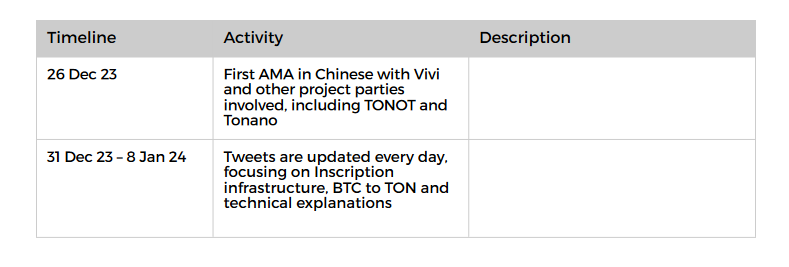
TownSquare is dedicated to facilitating the widespread adoption of the TON blockchain, effectively bridging Telegram's extensive user base of 800 million with the privacy, transparency, openness, and sovereignty intrinsic to the web3 world. This initiative focuses on developing both essential infrastructure and pivotal applications within the TON ecosystem. TownSquare plans to introduce the first decentralized, open-source inscription indexer. Furthermore, the team is actively engaged in exploring and developing protocols and applications that enable fair and secure asset insurance.
The data of the inscription is on L1, but the calculation process and data results are on the index. Essentially, the index is an off-chain server, no different from the website servers in web2. That is, the inscription's holding amount and transfer records are all on a website server. If there is a problem with the index service, assets based on this index service will have problems. In severe cases, it can even lead to the collapse of the entire protocol ecosystem (there have been previous cases where a protocol index bug caused an arbitrary increase in issuance, and data between two index parties could not be aligned, causing the entire protocol to stagnate and causing huge losses to the community). Therefore, the decentralization of the inscription index must be realized.
-
The TownSquare decentralized index is similar to the nodes of the public chain. The code is unified, and the data obtained by anyone who downloads and runs it is consistent. There will be no problem with several indexes colluding to falsify. The data security is high.
-
To quickly upgrade the protocol, they need to upgrade the decentralized index code uniformly. This greatly enhances the protocol's flexibility.
-
TON ecosystem developers no longer need to develop their own set of indexes. They only need to run the open-source, decentralized index program, which can be used very conveniently. (The decentralized indexes planned by Unisat and ierc20 also have incentive mechanisms, making more people willing to build indexes. This further enhances the degree of decentralization.)
FairTon
- Twitter:https://twitter.com/fairton_xyz
To highlight the advantages of the inscription as a Semi-Fungible Token (SFT), a use case must be created, requiring the expansion of the inscription protocol. Some teams have attempted to expand the inscription protocol by adding more op instructions in BRC20. However, once an inscription protocol gains wide market acceptance, multiple indexers will inevitably implement it. Expanding the protocol with multiple indexers requires off-chain consensus and consensus upgrades, presenting a challenge in terms of extensibility.
In response to the need for extensibility, the industry has explored a mature solution: smart contracts. The smart contract virtual machine mode of the blockchain is the most extensible mode explored by the entire software engineering industry. There are two current solutions: 1. Introduce smart contracts in the indexer. 2. Express inscriptions through smart contracts.
Smart contract inscription: In the TON ecosystem, due to the special structural mechanism of the contract language, there is no need to adhere to a token standard, offering higher flexibility compared to Ethereum. Bitcoin, lacking extensibility and combinability, has a single-play method for inscriptions. Smart inscriptions provide a broader creative space for inscriptions. Smart inscriptions themselves are native assets on the chain, and their impact on the TON ecosystem is likely to be positive. If the goal is to have a fair casino, then a casino with a lower threshold, lower cost, better user experience, and richer gameplay is a better potential choice.
Compared with similar MOVE series smart inscriptions, if there is no mint fee and the gas is too low, it is susceptible to witch attacks. Collecting mint fees also raises the issue of fund custody, which currently needs to be pledged in the inscription. This somewhat hinders more users from entering. FairTon aims to allow users to mint completely free of charge.
Research author: Vivi (TG: @Vivi133)
